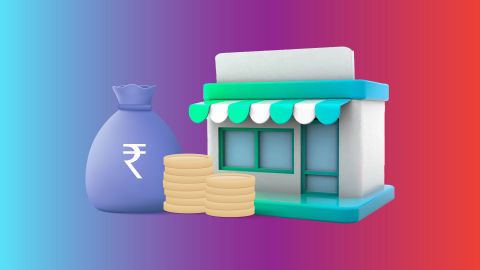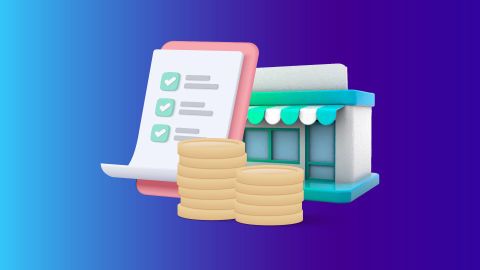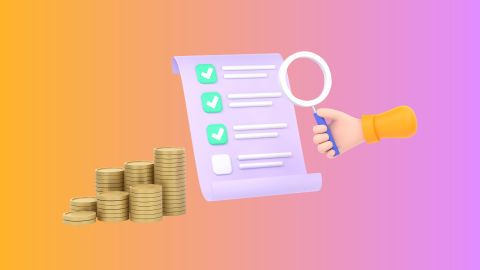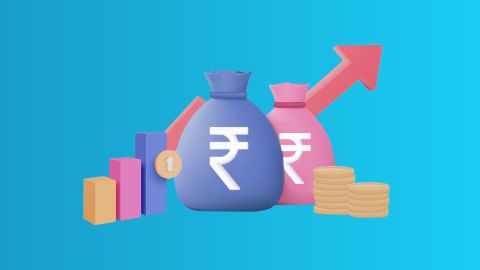Why is VAT required and how is it useful?
VAT is required primarily to generate revenue for the government, which is essential for funding public services and infrastructure projects. It spreads the tax burden across all stages of production and distribution, making tax collection more efficient and reducing the chances of tax evasion. VAT also promotes transparency in transactions, as businesses must document every step, making it easier to track and audit. Additionally, VAT is considered a fair tax system because it taxes consumption rather than income, ensuring that everyone contributes based on their spending patterns.
- Generates revenue for government services.
- Spreads tax burden across production stages.
- Promotes transparency and reduces tax evasion.
Examples for Value Added Tax (VAT)
For instance, if a manufacturer sells goods to a retailer for Rs 100 plus a 10% VAT, the manufacturer remits Rs 10 to the government. When the retailer subsequently sells the goods to the consumer for Rs 150 plus a 10% VAT, the consumer pays Rs 165. The retailer then pays Rs 5 to the government after claiming Rs 10 as an input tax credit. This process is a key part of the supply chain, ensuring tax is fairly collected at each stage of business operations.
Types of Value Added Tax (VAT)
VAT, or Value Added Tax, is a type of tax that has different forms based on the needs and situations:
- Standard VAT: It applies to most goods and services at a uniform rate, which makes the administration process simpler.
- Differential VAT: It uses different rates for domestic and imported goods and services.
- Small Business VAT: It uses simplified VAT systems that have lower reporting requirements for smaller businesses.
- Multi-rate VAT: It uses different rates for varied categories, for instance, essential goods may have a lower rate than luxury items.
- Reverse-charge VAT: It places the responsibility of VAT collection on the buyer rather than the seller, to help prevent tax evasion.
- Destination-based VAT: It varies based on where the goods or services are finally going to.
- Zero-rated VAT: It exempts certain services and goods, like exports or education, in order to promote these sectors.
Acquisition of assets can play a role in helping businesses remain compliant and competitive in the marketplace.
Value Added Tax (VAT) returns
Businesses with an annual turnover of Rs. 5 lakh or higher are required to file VAT returns. VAT is applicable on all domestic and imported goods and services.
- These returns can be filed by traditionally submitting the necessary paperwork to the relevant authorities.
- Alternatively, businesses registered under the VAT Act 2003 can file returns online using their assigned user ID and password.
Difference between Value Added Tax (VAT) and Sales Tax
The key difference between Value Added Tax (VAT) and Sales Tax lies in the stage at which they are collected. VAT is charged at every step of the supply chain where value is added, while Sales Tax is collected only once—when the final consumer makes a purchase.
Although both are forms of indirect tax on consumption, their application and administration vary greatly:
Aspect
|
Sales Tax
|
VAT (Value Added Tax)
|
Collection Point
|
Charged only once, at the final retail sale to the end consumer.
|
Charged at every stage of the supply chain (manufacturer, wholesaler, retailer, etc.) where value is added.
|
Tax Mechanism
|
Businesses that sell goods for resale are exempt from paying tax using exemption certificates.
|
Businesses pay VAT on their purchases (input tax) and collect VAT on their sales (output tax), then remit the difference to the government.
|
Revenue Timing for Authorities
|
The government receives all tax revenue only after the final retail sale.
|
The government receives revenue in smaller amounts throughout the production and distribution chain.
|
Documentation/Compliance
|
Requires maintaining exemption certificates for non-taxable sales, which can be risky if not managed properly.
|
Requires detailed invoices for each transaction, creating transparency and reducing tax evasion.
|
Cascading Effect
|
Can result in double taxation (“tax on tax”) if exemption certificates are not properly used.
|
The input tax credit system prevents double taxation and removes the cascading effect.
|
Global Usage
|
Mostly used in the United States at state and local levels.
|
Adopted in over 170 countries, including all EU member states.
|
Advantages and disadvantages of Value Added Tax (VAT)
Here are the main advantages and disadvantages of the Value Added Tax (VAT) system:
Advantages of VAT
|
Disadvantages of VAT
|
Stable Government Revenue: Provides a steady and reliable income source for the government, less affected by economic ups and downs.
|
Regressive Nature: Impacts low-income groups more, as they spend a higher share of their income on taxable goods.
|
Reduced Tax Evasion: The input tax credit mechanism promotes compliance since every business in the chain must show valid invoices.
|
Higher Prices: Businesses pass on the tax to customers, resulting in higher prices for goods and services.
|
Removes Double Taxation: Ensures tax is applied only to the value added at each stage of production, avoiding a cascading “tax on tax” effect.
|
Administrative Complexity: Increases paperwork and compliance efforts, especially for small businesses that must maintain regular records and filings.
|
Supports Exports: Most exports are zero-rated under VAT, helping domestic products stay competitive in global markets.
|
Can Drive Inflation: Introducing or increasing VAT may raise the general price level in the economy.
|
Encourages Savings: Since it’s a consumption-based tax, people may be encouraged to save more and spend wisely.
|
Hidden Cost: VAT is often included in the total price, reducing transparency and making it harder for consumers to see how much tax they are paying.
|
Value Added Tax (VAT) rates in India
Each state in India has its own rules and guidelines for VAT, leading to differences in how it is implemented, the rates, payment deadlines, and requirements for filing returns. VAT rates in India can generally be divided into four categories:
- Nil VAT rate: This includes products that are exempt from VAT. These items are usually sold in the unorganised sector and include basic or naturally occurring goods like salt and khadi
- 1% VAT rate: This rate mainly applies to expensive items, helping to prevent a significant increase in their final prices. Examples include gold, silver, diamonds, and precious stones. Many Indian states use this rate for high-cost commodities
- 4-5% VAT rate: Items in this category are taxed at a rate of 4% to 5%. This includes everyday essentials like cooking oil, medicines, tea, and other FMCG products like soaps
- General VAT rate: This rate, which varies between 12% and 15%, applies to goods that do not fall into the above categories. It includes luxury items and products harmful to health, such as liquor and cigarettes
How is Value Added Tax (VAT) calculated?
Input Tax
Input tax is the VAT paid by businesses on their purchases. Many purchases will include VAT charges, but businesses can usually claim this back as a credit. Input tax applies not only to raw materials and goods for resale but also to capital goods such as equipment and machinery.
Output Tax
Output tax is the VAT charged to the consumer when they buy a taxable product from a VAT-registered business. Businesses, partnerships, or individuals who make sales exceeding the prescribed threshold of Rs 5 lakh annually must register for VAT. Once registered, VAT must be charged on all taxable sales.
Calculation of VAT
While there are many online VAT calculators available, it’s useful to understand the basic calculation. The formula for VAT is straightforward:
VAT = Output Tax – Input Tax
For example, if a business buys goods for Rs 100 and pays 10% VAT (Rs 10) on that purchase, and then sells the goods for Rs 150 charging 10% VAT (Rs 15), the output tax is Rs 15 and the input tax is Rs 10. The business will therefore pay Rs 5 to the tax authorities, as it has already paid Rs 10 VAT on the initial purchase.
Collection of Value Added Tax (VAT) in India
The VAT collection process can be mainly divided into 2 key categories:
Based on the method of collection
- Account-based collection of VAT
In the account-based collection method, tax is calculated on the value added, rather than using sale receipts. The value-added tax is the difference between the revenue and allowable purchases.
- Invoice-based collection of VAT
This is the method used by most countries. In this system, sale receipts or invoices are used to calculate the VAT. When traders sell goods or services, they provide invoices that include the VAT details separately.
Based on the timing of collection
- Accrual-based collection
In accrual-based collection, revenue is recorded in the period when it is earned, and the cost of raw materials and expenses is matched to the period when they were incurred. This method is more complex than cash-based collection but provides more detailed information about the business.
- Cash-based accounting
Cash-based accounting is simpler than accrual-based accounting. It focuses on the actual cash being handled, rather than on bill payments. Whenever a payment is received, the date it is received is recorded as the date of the transaction.
What is the VAT registration number and how to apply online for it?
A VAT registration number is a unique identifier assigned to businesses registered for VAT. This number is essential for filing VAT returns and conducting business transactions. To apply for a VAT registration number online, businesses must visit the official tax authority website, fill out the registration form, and submit the required documents. Upon successful verification, the tax authority issues the VAT registration number, enabling the business to legally collect and remit VAT.
- Unique identifier for registered businesses.
- Required for VAT returns and transactions.
- Application process involves online form submission and document verification.
Who should register for Value Added Tax (VAT)?
Businesses that meet the specified turnover threshold are required to register for VAT. This threshold varies by country and can differ for different types of goods and services. Typically, businesses engaged in the sale of goods or services that are subject to VAT must register. Voluntary registration is also possible for businesses below the threshold, allowing them to reclaim VAT on their purchases. Registering for VAT ensures compliance with tax regulations and enables businesses to legally collect and remit VAT.
- Required for businesses meeting turnover thresholds.
- Thresholds vary by country and goods/services.
- Voluntary registration allows VAT reclaim on purchases.
Documents required for VAT registration
The key documents you will need to submit with your company’s VAT registration include:
- Certificate of Incorporation (for companies)
- Memorandum of Association (MoA) and Articles of Association (AoA) (for companies)
- Details of individuals involved in the business
- Proof of address for the company’s directors – such as a lease or rental agreement
- PAN card of the company, or individual PAN card in the case of a sole proprietorship
- Identification proof of the company directors
- Lease or rental agreement for the company or proprietorship
- Partnership deed (for partnership firms)
- Passport-sized photograph of the company director
- Additionally, the VAT registration process requires the following information from a company:
- Name of the dealer
- Company name
- Postal address
- Telephone number
- Email address
- Details of directors, managing directors, partners, or proprietors
- Details of the authorised signatory
- Company PAN number
- Date business commenced
- Date of birth or date of incorporation (for companies)
- Nature of business
- Description of commodities
- Bank account details
- List of directors (for companies)
How much time does it take to register for VAT?
The time required to register for VAT varies by jurisdiction and the completeness of the application. Generally, the process can take from a few days to several weeks. Factors affecting the registration time include the efficiency of the tax authority, the accuracy of the submitted documents, and the verification procedures. To expedite the process, businesses should ensure that all required documents are accurate and complete before submission. Prompt follow-up with the tax authority can also help speed up the registration process.
- Registration time varies by jurisdiction.
- Typically ranges from a few days to several weeks.
- Accurate and complete documentation expedites the process.
Why pay VAT when sales tax is already being levied by the government?
While both VAT and sales tax are forms of consumption taxes, VAT offers distinct advantages. VAT is collected at multiple stages of production and distribution, ensuring that tax is applied incrementally and transparently. This multi-stage collection reduces opportunities for tax evasion and spreads the tax burden more evenly. Additionally, VAT prevents the cascading effect of sales tax, where tax is paid on tax. By doing so, VAT promotes a fairer and more efficient tax system, ultimately contributing to higher and more stable revenue for the government.
- VAT ensures multi-stage tax collection
- Reduces tax evasion opportunities.
- Prevents cascading tax effect.
- Promotes fairness and efficiency in the tax system.
Is VAT the same as GST?
VAT and Goods and Services Tax (GST) are both consumption taxes, but they differ in scope and application. VAT is typically applied at the state level and varies by jurisdiction, while GST is a unified tax system that combines VAT and other indirect taxes into a single tax. GST aims to create a single, nationwide market by eliminating the complexities of multiple tax systems. For more details, you can refer to GST. Both VAT and GST aim to streamline tax collection and reduce evasion, but GST offers a more integrated approach.
- VAT is state-level, GST is unified nationwide.
- GST combines multiple indirect taxes into one.
- Both streamline tax collection and reduce evasion.
How Value Added Tax (VAT) fraud works
Getting involved in a series of transactions related to VAT fraud can have serious consequences, even if the transactions you are part of are not illegal by themselves.
The tax authorities will impose penalties when necessary, and you may face the following:
- You will lose your right to reclaim VAT
- If the transactions are linked to fraud, you will be liable for VAT on previously zero-rated intra-Community deliveries
- More detailed guidelines are available to help you protect your business from VAT fraud
The role of Bajaj Finserv Business Loan
As businesses navigate the complexities of tax compliance and the broader financial landscape, access to reliable financing becomes crucial. As a business owner, you know that growth requires capital. Whether you are looking to expand your operations, purchase new equipment, invest in marketing, or manage cash flow, a business loan can provide the financial support you need to take your business to the next level. Bajaj Finserv Business Loan is designed to offer you quick, flexible, and hassle-free funding, so you can focus on what you do best — running your business.
Here are a few reasons you should apply for a Bajaj Finserv Business Loan:
- High loan amounts: Get loans up to Rs. 80 lakh, ensuring you have the necessary funds to scale your business.
- Quick disbursal: Enjoy the benefit of fast processing and disbursal within 48 hours, so you can seize every business opportunity without delay.
- Flexible repayment options: Choose a repayment tenure that suits your financial situation, ranging from 6 months to 96 months.
- No collateral required: Secure funding without risking your assets. Bajaj Finance offers unsecured business loans, making it easier for you to get the funds you need.
- Minimal documentation: Streamlined application process with minimal paperwork, reducing the hassle and time spent on obtaining the loan.
Don't let financial constraints hold back your business potential. Apply for a Bajaj Finserv Business Loan today and take the first step towards achieving your business goals.
Helpful resources and tips for business loan borrowers






